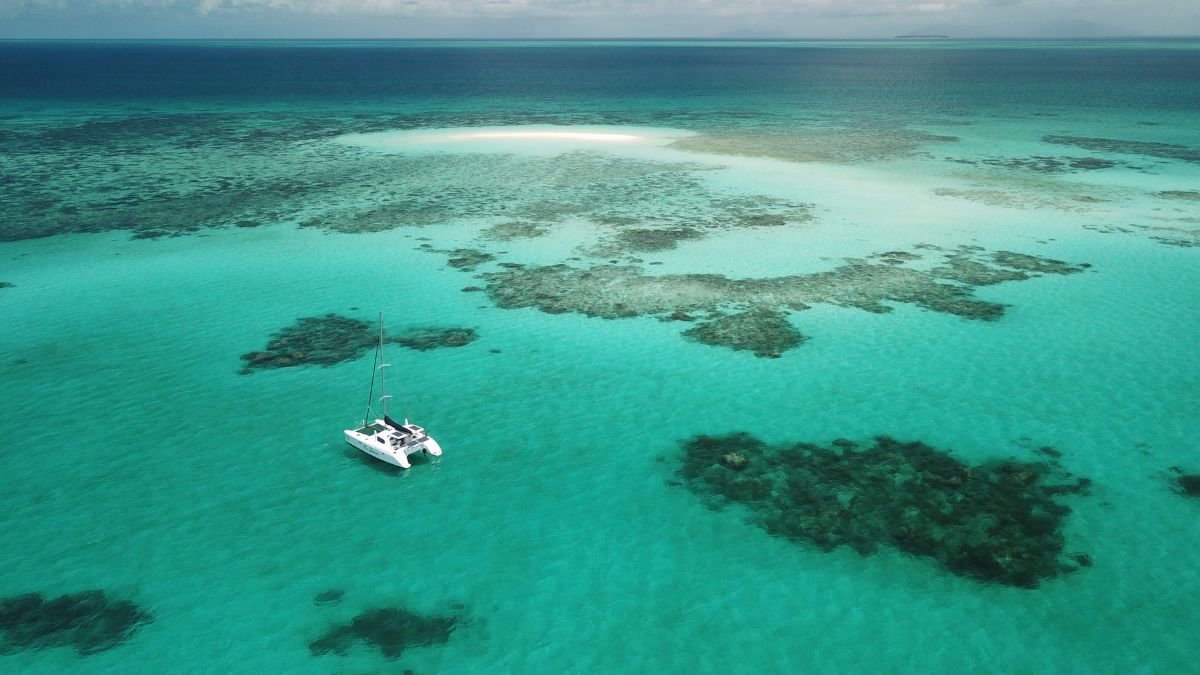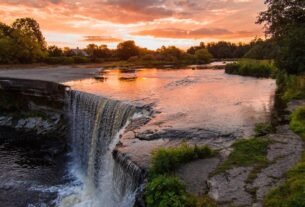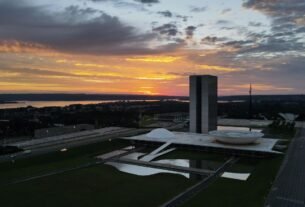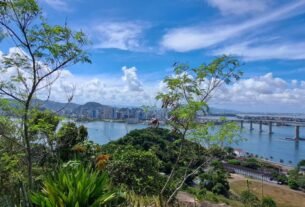Introduction
Did you know a coastal city in Brazil earned the nickname “Brazil’s Venice” for its intricate network of waterways and bridges? This vibrant urban hub, nestled in the northeast, blends rich history with modern energy. With its picturesque canals and lively waterfronts, Recife Brazil showcases a unique charm that draws both locals and tourists alike.
The city’s waterways are not just for aesthetics; they serve as vital transportation routes, connecting various neighborhoods and enhancing the urban experience. The fusion of colonial architecture with contemporary developments reflects Recife’s dynamic spirit and its role as a cultural melting pot.
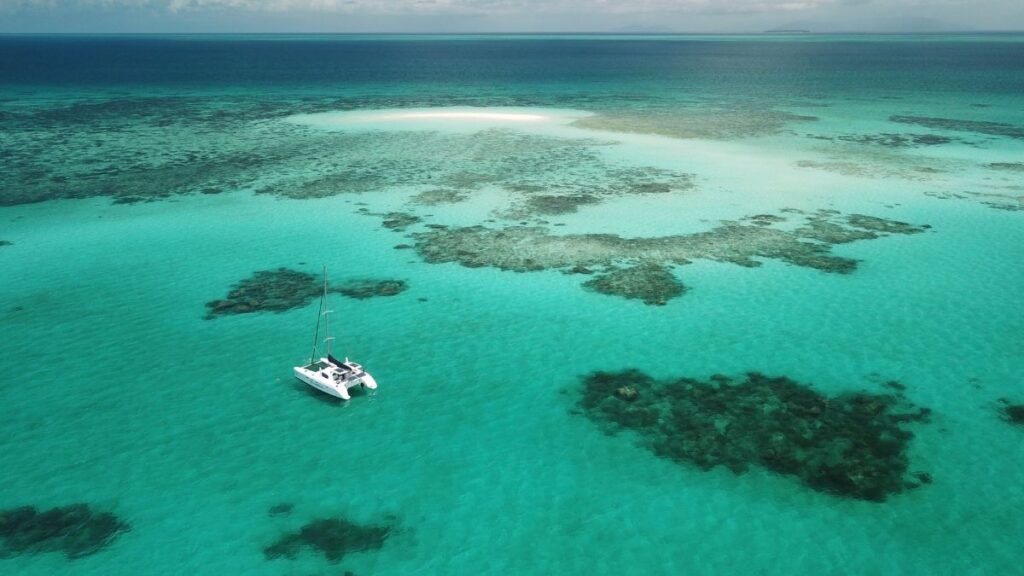
With over 50 bridges connecting its islands, this state capital boasts a metro population of 3.7 million. It’s a place where Dutch colonial heritage meets cutting-edge tech innovation at Porto Digital.
The city surprises visitors with shark-infested beaches near Boa Viagem, world-class Carnival celebrations, and leadership in medical tourism. Its Human Development Index ranks highest in the region, despite past crime spikes.
Key Takeaways
- Nicknamed “Brazil’s Venice” for its extensive waterways and bridges
- Fourth-largest urban area in the country with 3.7 million residents
- Unique blend of Dutch colonial history and modern technology hub
- Home to both shark-warning beaches and high HDI scores
- Leads in medical tourism and hosts vibrant Carnival traditions
Introduction to Recife Brazil
Stone reefs and Dutch engineering shaped this coastal marvel. Its name comes from the rocky formations visible at low tide, framing a city built on three islands. Over 50 bridges weave through the Beberibe and Capibaribe rivers, earning comparisons to Venice.
Why Recife is Called Brazil’s Venice
The Dutch left their mark in the 17th century with canals mimicking Venice’s layout. These waterways not only solved flood challenges but also created a striking architectural legacy. Today, the city’s aesthetic harmony of old and new draws global admiration.
- River delta geography with interconnected islands
- Historic flood control systems are still in use
- Pedestrian-friendly bridges offering waterfront views
The Cultural Significance of Recife
Nearby Olinda’s UNESCO World Heritage Site preserves 20 Baroque churches, showcasing colonial artistry and reflecting the intricate craftsmanship of the period. These churches, adorned with elaborate altars and stunning frescoes, not only serve as places of worship but also as cultural landmarks that attract visitors from around the world.
The city’s Carnaval blends African drumming, Indigenous dances, and Portuguese folklore, a testament to its cultural significance, as it embodies the rich tapestry of influences that have shaped the region. The festivities are a vibrant display of music, dance, and color, drawing thousands who celebrate the spirit of unity and diversity.
Fun fact: In 2023, it topped global whisky consumption charts, a surprising twist for a city known for its rum and cachaça. This quirky detail reflects its vibrant social scene, where traditions and modernity collide, creating a unique atmosphere that welcomes both locals and tourists alike. The blend of old and new is evident in the bars and restaurants that line the streets, offering a diverse range of options from traditional Brazilian fare to contemporary culinary experiences.
The Rich History of Recife
Few cities blend colonial charm and modern growth like this northeastern gem. Its history spans fishing villages, sugar empires, and Dutch urban designs, showcasing a narrative that is as complex as it is fascinating. Each era left marks still visible today, from the colonial architecture that lines the streets to the modern buildings that symbolize progress and innovation.
From Fishing Village to Colonial Hub
Founded in 1537, the city began as a Portuguese outpost. By the 16th century, sugar cane exports fueled its rise, transforming it into a bustling trade center. Wealth from plantations funded ornate churches and ports, allowing Recife to flourish as a hub of commerce and culture in the region.
The Dutch Influence: Mauritsstad
From 1630–1654, Dutch Brazil made it New Holland’s capital. Count John Maurice’s urban plans included canals and bridges that enhanced the city’s connectivity and aesthetic appeal. His legacy lives in the grid-like streets of Recife Antigo, where the past meets the present, creating a vibrant atmosphere that continues to attract visitors and locals alike.
The War of the Mascates
In 1710, merchants rebelled against Olinda’s elite. The conflict reshaped power structures, favoring trade over aristocracy. It’s a pivotal chapter in the region’s colonial narrative.
| Era | Key Development | Legacy |
|---|---|---|
| 16th Century | Portuguese settlement | Sugar economy |
| 17th Century | Dutch occupation | Urban canals |
| 18th Century | Mascates War | Trade dominance |
- 1950 & 2014: Hosted FIFA World Cup matches, spotlighting modern infrastructure.
- Architecture: Baroque churches stand beside tech hubs like Porto Digital.
Geography and Climate of Recife
Water defines every aspect of this city, from its island layout to its tropical climate. Three main landmasses—Recife, Santo Antônio, and Boa Vista- form an urban archipelago spanning 6.8 km², stitched together by 50 bridges. This intricate network of waterways not only enhances the city’s beauty but also plays a crucial role in its transportation and commerce, reflecting the historical significance of water routes in the region.
The vibrant canals and rivers are lined with lush greenery and colorful buildings, showcasing a blend of colonial architecture and modern design that captivates both residents and tourists alike.
The Unique Island City
The Beberibe and Capibaribe rivers carve through the metro area, creating a dynamic waterfront that is both functional and aesthetically pleasing. These waterways once served as flood controls, helping to manage the seasonal rains that can lead to heavy downpours.
Today, they frame a skyline where colonial churches stand beside tech hubs, illustrating the city’s blend of history and modernity. The rivers not only enhance the urban landscape but also provide recreational opportunities for residents and visitors, such as boating and riverside parks, making them vital to the community’s lifestyle.
Tropical Monsoon Climate
Classified as Am Köppen, the region receives 2,155 mm of annual rainfall, a characteristic that contributes to its lush vegetation and vibrant ecosystems. June averages 390mm with 84.6% humidity, creating a humid atmosphere that can feel quite tropical, while December dips to 71.9%, offering a brief respite from the heavier rains. Temperatures range from 21°C (winter lows) to 33°C (summer highs), creating a warm climate year-round that supports a variety of outdoor activities and festivals, which are integral to Recife’s cultural life.
| Season | Avg. Temp | Rainfall | Humidity |
|---|---|---|---|
| Summer | 33°C | High | 84.6% |
| Winter | 21°C | Moderate | 71.9% |
Rivers and Reefs: Natural Wonders
Offshore reefs create calm water near beaches like Boa Viagem, though 37 shark attacks since 1992 warrant caution. These reefs serve as a barrier against the waves and as a habitat for a diverse range of marine species, including colorful fish and coral, which thrive in this unique ecosystem.
The reefs also protect marine life, making them key to local ecology and supporting the fishing industry that many families rely on for their livelihoods. Additionally, they play a crucial role in maintaining the water quality and health of the coastal environment, highlighting the importance of conservation efforts in the region.
Recife’s Demographics and Culture
A vibrant mix of ethnicities and faiths defines this city’s unique identity. Nearly half its people identify as Pardo (mixed-race), while 38.8% are White and 12.3% Black. This blend stems from centuries of migration, slavery, and cultural exchange, resulting in a rich tapestry of traditions, languages, and artistic expressions that reflect the city’s historical influences.
The intermingling of cultures has fostered a spirit of resilience and creativity, evident in the local music, dance, and culinary arts that celebrate this diverse heritage.
A Melting Pot of Ethnicities
The African slave trade deeply shaped the region’s cultural DNA. Enslaved communities brought rhythms, cuisine, and spiritual practices that endure today, influencing everything from the local music genres to the vibrant festivals celebrated throughout the year.
Synagogue Kahal Zur Israel, the Americas’ first Jewish temple, adds another layer to this mosaic, showcasing the historical presence of Jewish communities in Recife and their contributions to the cultural landscape. This interwoven history of various ethnic groups continues to enrich the city’s identity, making it a fascinating place for both residents and visitors alike.
Religious Diversity and Traditions
Over 54% of residents are Catholic, reflected in grand churches like the Basilica of Our Lady of Mount Carmel. Yet, Afro-religions like Umbanda and Candomblé thrive, especially in the bustling stalls of São José Market.
| Demographic | Percentage | Cultural Impact |
|---|---|---|
| Pardo | 48.5% | Mixed-race heritage |
| White | 38.8% | European colonial roots |
| Black | 12.3% | African traditions |
Time-honored traditions come alive during festivals. July 16 honors Our Lady of Mount Carmel, while Olinda’s Carnival dazzles with giant puppets and frevo dance. Women comprise the majority of the population (53.8%), bringing a distinct dynamic to social life.
Economic Hub of Northeastern Brazil
From colonial sugar mills to modern technology hubs, this region has reinvented its economic identity, evolving from a reliance on traditional agriculture to one that now embraces cutting-edge industries. The metropolitan region boasts an impressive GDP of R$47.2 billion, a testament to its economic resilience, with over 85,000 companies driving innovation across various sectors. Notably, it is home to 52% of the Northeast’s research centers, making it a key player in the advancement of technology and sustainable practices in Brazil, all while surrounded by cultural gems and other natural beauties. One of them is Canoa Quebrada in CE, a coastal destination that combines tradition, tourism, and regional identity.
Sugar Cane and Beyond: Historical Industries
Sixteenth-century Portuguese settlers established sugar cane plantations that fueled Brazil’s early economy, laying the foundation for wealth that would shape the region for centuries. By the 1600s, mills produced both raw sugar and ethanol, pioneering renewable energy that would later gain global recognition as an alternative fuel source. In cities like Natal in RN, this historical legacy can still be traced in the architecture, culture, and economic roots that shaped the region’s identity.
The Dutch later enhanced production techniques during their occupation, introducing advanced milling processes and agricultural practices that significantly increased yield and efficiency, setting a standard that would shape the sugar industry for generations.
“No other northeastern state transformed its colonial legacy into modern industry so effectively” — Pernambuco Economic Review
Modern Economic Drivers
Today, Suape Port manufactures oil platforms for global markets, while a Jeep plant exports vehicles worldwide. The region maintains a 6.8% unemployment rate—better than Brazil’s 7.8% average.
| Sector | Contribution | Key Player |
|---|---|---|
| Automotive | 38% industrial output | Jeep Production |
| Tech | 22% GDP growth | Porto Digital |
| Energy | 17% exports | Suape Port |
Since 1960, Sudene’s development policies have boosted infrastructure. This state now leads in medical tech, renewable energy, and creative industries, proving economic evolution never stops.
Recife’s Thriving Information Technology Sector
Silicon Valley isn’t the only place where software dreams come true. Northeast Brazil now hosts a booming tech ecosystem generating R$10 billion annually. Over 90 firms call this unexpected hub home, proving innovation thrives in tropical climates.
Porto Digital: The Silicon Valley of Brazil
Founded in 2000, Porto Digital transformed historic docks into a technology powerhouse. The district created over 3,000 high-paying jobs while preserving its colonial architecture. It’s a secret? Tax incentives are attracting the regional headquarters of IBM and Microsoft.
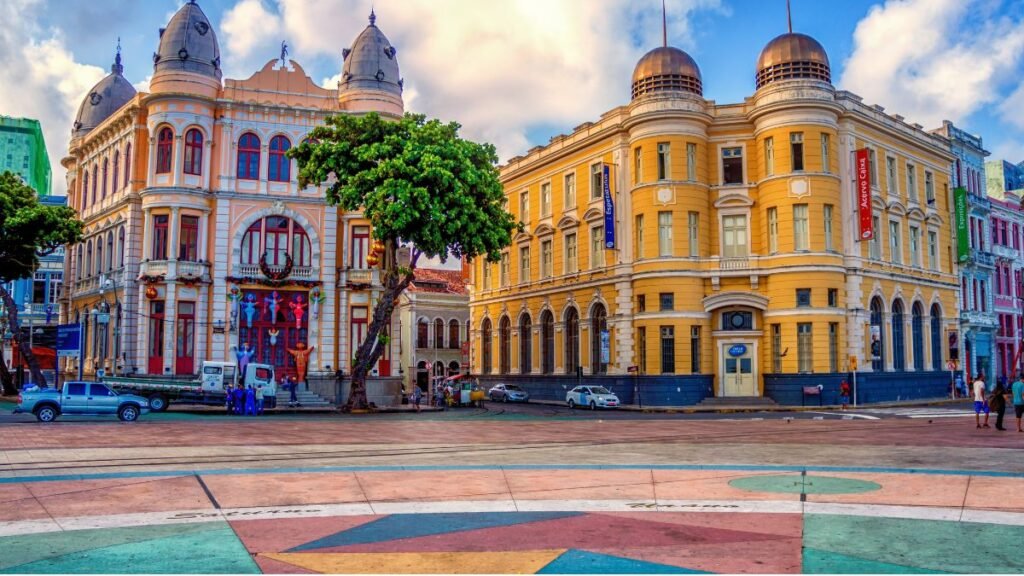
The CESAR Institute fuels growth by incubating over 120 startups annually. Partnering with the Federal University of Pernambuco, it bridges academia and industry. “We’re a breeding ground for AI and agritech solutions,” says director Marcos Souto.
Major Companies and Innovations
Global players, such as Accenture and Samsung, operate alongside homegrown talent. Dell’s R&D center develops cloud solutions here. Local startups pioneer:
- AI-powered crop monitoring for sugarcane fields
- Blockchain logistics for Suape Port
- Medical diagnostic software is exported worldwide
| Employer | Specialty | Workforce |
|---|---|---|
| IBM | Cloud Computing | 850+ |
| Samsung | Mobile Tech | 620 |
| CESAR | Startup Incubation | 300 |
With 52% of Northeast Brazil’s research centers, the region continues to attract talent. Recent graduates earn 40% more than regional averages, proving that technology drives prosperity.
Logistics and Transportation in Recife
Navigating this coastal metropolis requires an efficient transport network that bridges islands and connects industries. Over 4% of workers keep goods moving through ports, rails, and digital platforms.
Gateways for Global Commerce
Guararapes Airport handles 6.5 million passengers annually, linking the region to 12 international destinations. Its modern terminals feature advanced baggage systems and streamlined customs.
Suape Port serves as a logistics hub with 14-meter-deep channels accommodating mega-ships. The facility processes 40% of northeastern Brazil’s container traffic and supports the construction of oil platforms.
Moving the Metro Area
The metro system plans to expand to 42km by 2025, easing congestion in the urban core. Current lines serve 300,000 daily riders with air-conditioned cars.
Ride-sharing dominates urban mobility, accounting for 83% of commutes. Apps integrate with bike-sharing stations along 58km of dedicated cycling paths.
| Transport Mode | Usage | Key Feature |
|---|---|---|
| Metro | 300k/day | 42km expansion |
| Ride-share | 12% of trips | App integration |
| Cycling | 12% trips | 58km paths |
The 1,118 km Transnordestina railway connects seven states, thereby reducing truck traffic. Yet congestion still costs R$9.3 billion yearly in lost productivity—a challenge for planners.
Shopping and Entertainment in Recife
Retail therapy meets cultural immersion in this dynamic city. From sprawling malls to vibrant street scenes, the urban landscape offers endless ways to explore and enjoy.
Retail Havens for Every Taste
Riomar Mall leads with 101,000 m² of retail space, housing over 300 stores. Its waterfront location blends shopping with ocean views. Two other standouts showcase distinct styles:
- Tacaruna: Modern brutalist design with open-air plazas
- Casa Forte: Colonial-inspired architecture with artisan boutiques
Both centers feature cinemas, food courts, and live music venues. Luxury brands sit alongside local crafts at these shopping centers.
Where Culture Comes Alive
Over 200 annual festivals transform streets into stages. The June Festivals honor rural traditions with bonfires and square dancing. Meanwhile, Carnival brings electrifying frevo performances.
| Cultural Venue | Highlight | Unique Feature |
|---|---|---|
| Paço do Frevo | Dance museum | Interactive workshops |
| Cinema São Luiz | Art deco theater | 1930s golden age films |
| Marco Zero | Open-air concerts | 2014 World Cup stage |
The Mangue Beat music movement started here, fusing rock with regional rhythms. Top chefs elevate local flavors at Michelin-starred Leite restaurant. Its tasting menus showcase crab and tropical fruits.
Evenings glow at rooftop bars overlooking the Capibaribe River. Whether browsing galleries or dancing to live music, the city delivers unforgettable experiences.
Medical Facilities and Healthcare in Recife
Cutting-edge medical facilities meet tropical warmth in this healthcare hub. With 417 hospitals and 8,990 beds, the region blends advanced treatment with compassionate care.
Leading Hospitals and Research Centers
Hospital Português ranks #7 nationally, offering specialized cardiac and neurology units. Its robotic surgery wing attracts patients across Latin America.
IMIP pioneers pediatric innovations, reducing infant mortality by 34% since 2015. Nearby, Hospital de Câncer leads in oncology with proton therapy trials.
“Our partnership with Johns Hopkins Medicine elevates oncology research standards.” —
UFPE Medical Dean
Medical Tourism in Pernambuco
Cosmetic surgery tourism is growing at a rate of 23% annually, with affordable procedures attracting international visitors. Dental implants and bariatric surgeries are top requests.
- UFPE publishes 120+ annual studies on tropical diseases
- Suape Medical City hosts 12 specialty clinics
- 120,000+ healthcare workers support the sector
From research centers to recovery resorts, the region redefines the concept of health tourism. Its mix of expertise and hospitality sets a global benchmark.
Government and Politics in Recife
Political innovation thrives alongside cultural heritage in this coastal metropolis. The government balances modern urban challenges with a legacy of participatory democracy. Since 2021, Mayor João Campos (PSB) has spearheaded reforms, supported by a 39-member municipal chamber.
Current Leadership and Policies
Campos’ administration prioritizes sustainable mobility, expanding bike lanes and electric bus routes. His policies also focus on reducing crime, with a 22% drop in homicides since 2022, achieved through community policing.
The 2020 election saw a voter turnout of 78.4%, reflecting strong civic engagement. Key initiatives include:
- AI-powered traffic management systems
- Tax incentives for green building projects
- Expanded healthcare access in favelas
Historical Political Milestones
In 1993, the city pioneered participatory budgeting, letting residents allocate 15% of municipal funds. This model inspired global reforms.
| Year | Milestone | Impact |
|---|---|---|
| 1964 | Resistance to military dictatorship | Preserved democratic institutions |
| 1982 | UNESCO designation | Boosted heritage conservation funds |
| 2021 | Campos’ election | Tech-integrated urban planning |
Today, the PSB party’s progressive agenda continues shaping one of Brazil’s most dynamic cities.
Tourism in Recife: Must-See Attractions
Golden chapels and moonlit river cruises await in this coastal gem. With a 60% hotel occupancy rate in peak season, the city seamlessly blends adventure with artistry, offering visitors a vibrant tapestry of experiences. From stunning beaches to rich cultural heritage, the city attracts travelers from all corners of the globe.
Visitors discover shark-monitored shores just minutes from 18th-century gold-leaf sanctuaries, where history and modernity coexist harmoniously, providing a unique backdrop for exploration.
Historic Sites and Landmarks
Francisco Brennand’s ceramic park displays 90 sculptures across tropical gardens, inviting guests to immerse themselves in a world of creativity and inspiration. The artist’s studio remains preserved, showcasing works inspired by indigenous myths and Brazil’s rich cultural narratives.
This enchanting space not only highlights Brennand’s artistic vision but also serves as a testament to the city’s commitment to art and culture. At Capela Dourada, 400 kg of gold leaf covers the Baroque altars, creating a breathtaking sight that captivates all who enter. Nearby, Malakoff Tower’s 1823 observatory now hosts jazz nights with panoramic views, offering a perfect blend of history and contemporary entertainment.
The tower stands as a testament to Recife’s architectural heritage, while also serving as a venue for cultural gatherings that enrich the local community.
Boa Viagem Beach and Shark Safety
Signs warn swimmers about 37 recorded shark attacks since 1992, emphasizing the importance of safety in these beautiful waters. Lifeguards monitor the waters daily, flying red flags when risks increase, ensuring that beachgoers can enjoy their time with peace of mind. The local authorities take shark safety seriously, implementing measures to protect both swimmers and marine life.
The 8km shoreline still draws tourists with its warm waters and inviting atmosphere. Morning low tides reveal natural pools that are perfect for safe wading, allowing families to enjoy the beach while keeping a watchful eye on their children. The combination of stunning scenery and vigilant safety measures makes Boa Viagem Beach a beloved destination for both locals and visitors alike.
Recife Antigo: The Heart of the City
Marco Zero square pulses with live music and craft markets. This cultural complex anchors the revitalized port district.
Evening cruises along the Capibaribe showcase illuminated bridges. Local guides share tales of Dutch merchants and pirate raids.
| Attraction | Unique Feature | Visitor Tip |
|---|---|---|
| Brennand Park | Open-air kiln demonstrations | Visit at sunset for best photos |
| Boa Viagem | Shark warning system | Swim only in designated areas |
| Marco Zero | Giant compass rose mosaic | Friday nights for free concerts |
From historic sites to beaches, every corner tells a story. The blend of caution and celebration makes this a truly unique destination.
Exploring Olinda: Recife’s Charming Neighbor
Colorful colonial facades climb steep slopes just minutes from the metro area. This historic center, designated a UNESCO World Heritage Site in 1982, feels as though it is frozen in time. Seven kilometers north, it offers panoramic views from Alto da Sé hill.
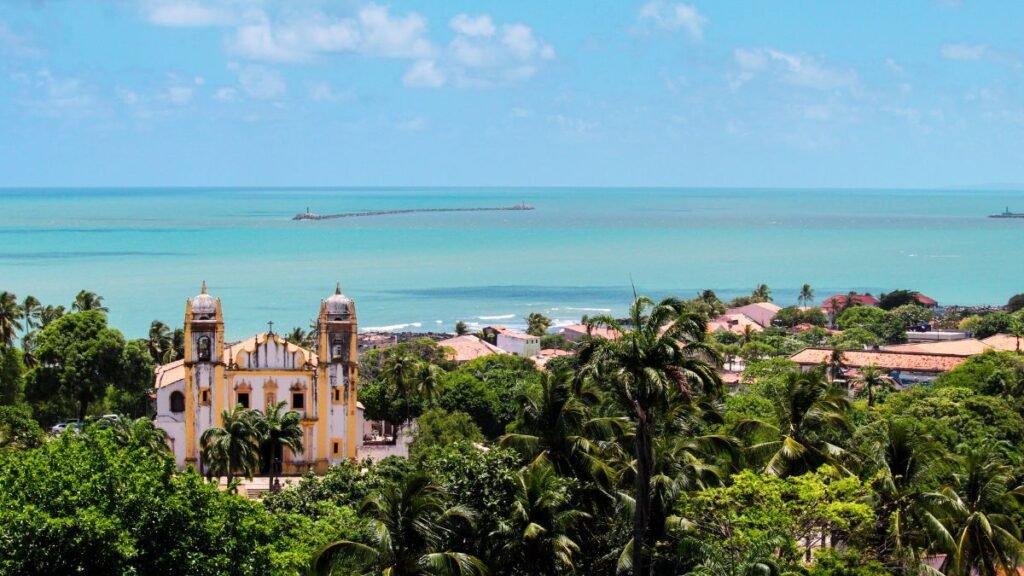
Treasures of the Colonial Era
Walking tours reveal 16th-century convents with hand-painted azulejo tiles. The Franciscan Monastery’s gold-leaf altar shines beside the Museum of Sacred Art. Friday nights come alive in Quatro Cantos square with forró music and craft stalls.
Key landmarks include:
- Casa dos Bonecos: Workshop where artisans craft giant Carnival puppets
- São Bento Basilica: Brazil’s first Benedictine church (1582)
- Ribeira Market: Local ceramics and lacework
When the Streets Come Alive
Each February, Carnival transforms the town with 2,000 puppets called bonecos gigantes. These towering figures parody politicians and celebrities while frevo bands play. The celebration seamlessly blends Portuguese, African, and indigenous traditions.
| Carnival Feature | Description | Best Viewing Spot |
|---|---|---|
| Bonecos Gigantes | 4m-tall papier-mâché figures | Alto da Sé square |
| Frevo Parades | Acrobatic dancers with tiny umbrellas | Rua do Amparo |
| Maracatu Nations | Afro-Brazilian drum processions | Carmo Convent |
Morning visits reward explorers with quiet lanes and ocean breezes. By sunset, the hilltop becomes prime territory for caipirinhas and panoramic photos. This cultural sibling offers the perfect counterpoint to urban energy.
Cuisine of Recife: A Culinary Journey
Every bite tells a story in this city where African, Portuguese, and indigenous flavors collide. The food scene generates 32% of Pernambuco‘s GDP, blending tradition with innovation. From institutions founded in 1882 to modern gastropubs, the cuisine reflects centuries of cultural exchange.
Signature Dishes and Flavors
Don’t leave without trying bolo de rolo, a thin, guava-filled cake layer that melts in your mouth. For savory options, seafood shines in dishes like moqueca at Oficina do Sabor, where coconut milk and dendê oil create rich stews.
Street food culture thrives with tapioca crepes stuffed with cheese or shredded beef. Sweet-toothed visitors adore cartola, fried bananas with cheese and cinnamon, a perfect breakfast treat.
Where to Dine and Drink
Leite Restaurant has remained an icon since 1882, serving refined takes on regional classics. Their crab risotto showcases local ingredients with European techniques.
For drinks, Bar do Peneira offers 150 varieties of cachaça. Craft beer lovers head to Cervejaria Pau Brasil, where tropical fruits infuse artisanal brews.
| Venue | Specialty | Must-Try |
|---|---|---|
| Emporium Sertanejo | Regional products | Goat cheese with pepper jelly |
| Parraxaxá | Buffet | Carne de sol with green beans |
| Bargaço | Seafood tower | Grilled lobster |
Whether sampling market stalls or fine dining, the city’s restaurants create unforgettable gastronomic memories. Each meal becomes a delicious lesson in history.
Safety and Travel Tips for Recife
Smart travelers know preparation is key to enjoying this vibrant coastal destination safely. While the city offers rich culture and stunning beaches, understanding local protocols ensures a smooth experience. Recent crime reduction efforts have improved safety, but awareness of the issue remains essential.
Navigating the City with Confidence
Opt for ride-shares like Uber over night buses, especially in less touristy areas. Keep valuables secure in crowded areas, such as markets or festivals—anti-pickpocketing cross-body bags work well.
At beaches, heed the colored flag system:
- Green: Safe for swimming
- Yellow: Caution advised (sharks spotted nearby)
- Red: Lifeguard-monitored zones only
For emergencies, dial 190 for police. Tourist police stations speak English and are available to assist with reports.
When to Visit for Ideal Conditions
September to November offers the best times to explore. These shoulder-season months combine warm temperatures (avg. 28°C) with November’s low rainfall (39mm).
Peak Carnival (February) demands extra vigilance in crowds. June’s high humidity can be taxing for outdoor activities. Always check the climate forecast before heading to the beach.
Learn more Fortaleza.
Conclusion: Why Recife Brazil Should Be on Your Travel List
Few destinations blend centuries-old charm with cutting-edge innovation quite like this coastal gem. From 17th-century Dutch forts to Porto Digital’s tech parks, the city offers a unique mix of history and progress.
Affordable compared to Rio or São Paulo, it’s a gateway to Fernando de Noronha’s pristine beaches via direct flights. Explore Baroque churches by morning and AI startups by afternoon.
Ready to dive in? Start planning your culture-packed itinerary today—this hidden jewel belongs on every travel list.
FAQ
Why is Recife called Brazil’s Venice?
The city earned this nickname due to its intricate network of rivers, canals, and bridges, resembling Venice’s waterways. Its coastal geography and historic architecture further enhance the comparison.
What is the best time to visit for warm weather and festivals?
From June to September, the weather offers pleasant temperatures and events like São João. Carnival in February or March is ideal for vibrant street parties.
Is Boa Viagem Beach safe for swimming?
While beautiful, its waters have occasional shark sightings. Stick to protected areas near reefs and heed local warnings for safety.
What cultural landmarks should I prioritize?
Don’t miss Recife Antigo’s historic center, the Instituto Ricardo Brennand, and the UNESCO-listed churches of Olinda, just a short drive away.
How does Porto Digital impact the local economy?
As a tech hub, it attracts global firms and startups, driving innovation in software, gaming, and renewable energy sectors.
What traditional dishes define the local cuisine?
Try carne de sol (sun-dried beef), tapioca crepes, and bolo de rolo (guava-filled cake) for authentic flavors.
Are there direct international flights to Guararapes Airport?
Yes, it connects to Lisbon, Miami, and Panama City, with domestic routes to São Paulo and Rio de Janeiro.
What makes Olinda’s Carnival unique?
Its giant puppets (bonecos gigantes), Afro-Brazilian rhythms, and hilltop parades create a lively, less commercialized experience.
How reliable is public transportation?
Metro lines and buses serve key areas, but ride-sharing apps are recommended for convenience during peak hours.

